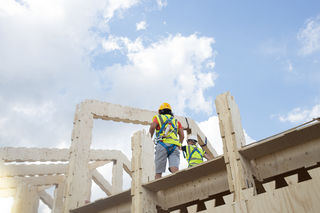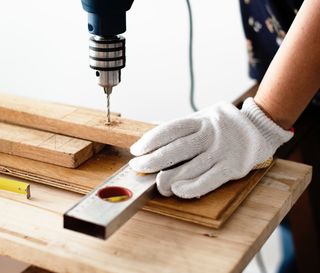
Relationships
The IKEA Effect
Why we love things more when we build them ourselves.
Posted October 1, 2019 Reviewed by Kaja Perina

When instant cake mixes made their supermarket debut in the 1950s, American housewives were initially suspicious. These boxes of floury powder promised to make cake-baking as easy as pie—well, much easier than pie. Cake mixes felt too easy.
The manufacturers discovered that requiring the addition of an egg instilled the process with just enough effort to make the housewives happy with their work. To feel they had indeed “baked the cake.” Various factors may have played a role—the cake may very well have looked and tasted better. But the greater sense of effort gained from a little extra labor is believed to have been essential to the subsequent success of the cake mix (Shapiro, 2004).

While we might imagine that taking on greater labour, costs, and time would lessen the value of a chair or cake, the reverse seems to be the case. We place greater value on things we have worked to create—from the micro-scale of a Lego house to larger-scale creations like affordable housing. The IKEA effect, as this phenomenon has been called by business psychologist Michael I. Norton and his colleagues, may not be as counterintuitive as it first appears.
People typically say their jobs are less enjoyable than other activities they engage in, like spending time with friends or going out for a meal. But they also tend to rank their work as one of the most rewarding activities (White & Dolan, 2009). A wide range of research into this seemingly contradictory attitude has consistently confirmed that as we expend more effort on a particular activity or piece of work, we also value it more highly. Even rats, our favorite animal stand-ins for human nature, prefer food sources that they have to work harder to acquire (Lawrence & Festinger, 1962).

Norton and his colleagues conducted four studies in which they asked participants to fold origami cranes and frogs, assemble IKEA boxes, and build sets of Legos. They then asked the builders to bid for their creations, and compared the prices with bids and other evaluative measures from people who hadn’t built them. The builders consistently out-bid the non-builders.
“Labour leads to love,” as Norton and his colleagues wrote, but only when tasks are successfully completed. When people had failed in their attempts to fold paper cranes and construct Lego sets, the IKEA effect weakened – as it also did when they were forced to dismantle their creations (Norton, Mochon, & Ariely, 2012).
Intriguingly, the IKEA effect works even when people have no opportunity to personalize their creations—as with the IKEA boxes and Lego sets. While most participants’ origami skills left much to be desired, they loved their imperfectly personalized products all the more. Builders valued their crumpled crane-like creations nearly five times as much as non-builders. Beauty, it seems, is in the eye of the builder.

Today, as cities ranging from San Francisco and London to Kuala Lumpur suffer from severe housing crises, the IKEA effect can give us insight into the well-being benefits of the “citizen sector” or self-building approach to housing development, as I wrote about recently for Next City.
Projects like WikiHouse and the “half-a-house” approach pioneered by Alejandro Aravena’s architecture firm Elemental are working to make housing more affordable and sustainable by making it easier for people to build and personalize their own dwellings.
Empowering people to shape their own housing—The IKEA effect suggests—may simultaneously help them build a greater sense of pride and self-efficacy.
‘The moment people are involved with their built environment they have a totally different relationship to it,’ WikiHouse co-founder Alastair Parvin explained to me. When the roof starts leaking or a door starts creaking, they have the power to fix it themselves.”
This post is adapted from my book, The Shaping of Us: How Everyday Spaces Structure Our Lives, Behavior, and Well-Being, published by Trinity University Press in 2019.
References
Norton, M.I., Mochon, D., Ariely, D. (2012). The IKEA effect: When Labor leads to love. Journal of Consumer Psychology, 22(3), 453-460.
Shapiro, L. (2004). Something from the Oven: Reinventing Dinner in 1950s’ America. New York: Viking
Lawrence, D. H., & Festinger, L. (1962). Deterrents and Reinforcement: the Psychology of Insufficient Reward. Stanford, CA: Stanford University Press.
White, M. P., & Dolan, P. (2009). Accounting for the richness of daily activities. Psychological Science, 20, 1000-1008.

